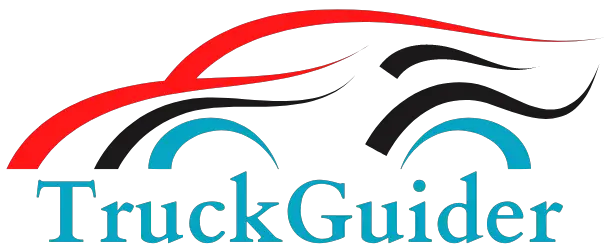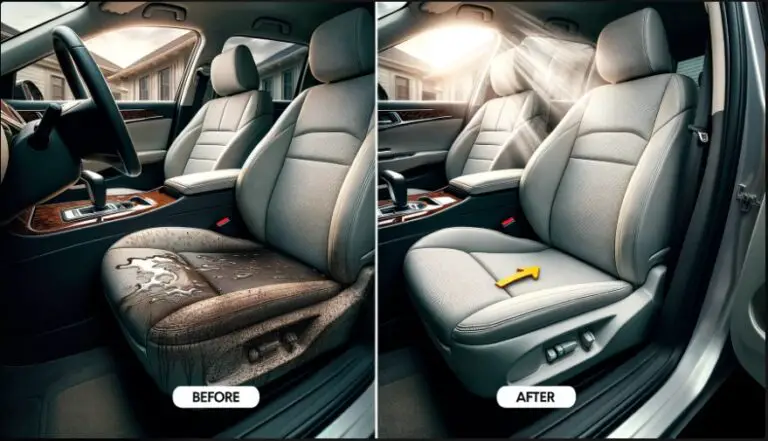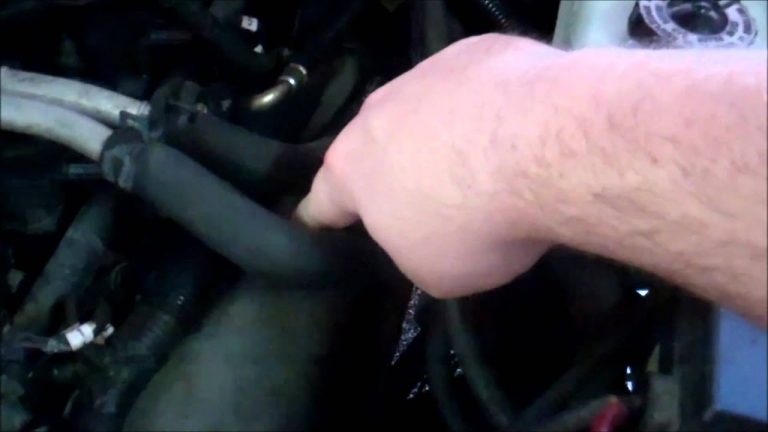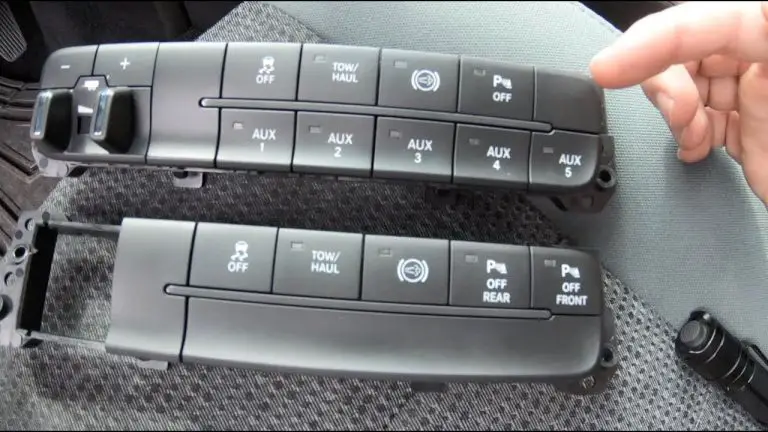Dodge 4.7 Head Bolt Torque Specs: Avoid Mistakes
The Dodge 4.7L head bolt torque specification is as follows:
Step 1: Tighten bolts 1-10 to 15 ft. lbs. (20 Nm)
Step 2: Tighten bolts 1-10 to 35 ft. lbs. (47 Nm) and bolts 11-14 to 18 ft. lbs. (25 Nm)
Step 3: Turn bolts 1-10 an additional 90 degrees (1/4 turn) and tighten bolts 11-14 to 22 ft. lbs. (30 Nm)
It is important to follow the torque sequence and torque the bolts to the specified values in steps. This will help to ensure that the head bolts are evenly tightened and that the cylinder heads are properly sealed.
How to Tighten Head Bolts on a Dodge 4.7L Engine
Before you get down to tightening the head bolts on your Dodge 4.7L engine, you need to be well-prepared. This guide covers everything from preparation to the actual tightening process.
Preparatory Steps
Cleaning the Cylinder Head and Block Surfaces
First and foremost, make sure the cylinder head and block surfaces are clean. Any debris can affect the seal and lead to future problems. You can use a soft cloth and a cleaning solvent to ensure both surfaces are spotless.
Applying Head Gasket Sealant
Once the surfaces are clean, apply a thin layer of head gasket sealant. Make sure it’s spread evenly for the best results.
Positioning the Head Gasket
Before setting down the cylinder head, you’ll need to carefully place the head gasket onto the block surface. Ensure it’s aligned correctly, paying close attention to bolt holes and other fixtures.
Placing and Aligning the Cylinder Head
Now, it’s time to place the cylinder head onto the block. Double-check the alignment, making sure it sits perfectly over the gasket and the block. The bolt holes should line up precisely with those in the gasket and block.
Tightening Procedure
Using a torque wrench is not optional; it’s a necessity. This tool ensures you apply the correct amount of force, following the specs outlined in the first section of this guide.
Star Pattern Tightening Method
When tightening the head bolts, use a star pattern. This technique helps to distribute the clamping force uniformly, avoiding any warping or uneven pressure on the gasket.
Post-Tightening Steps
Sealant Curing Time
After you’ve successfully tightened all the bolts, allow some time for the sealant to cure. This ensures a tight and secure fit, reducing the risk of leaks later on.
Torque Specifications Recap
It’s always helpful to have a quick refresher. Here’s a concise summary of the torque specs you need to remember when working on your Dodge 4.7L engine.
- Step 1: Bolts 1-10 tightened to 15 ft. lbs. (20 Nm)
- Step 2: Bolts 1-10 tightened to 35 ft. lbs. (47 Nm); Bolts 11-14 to 18 ft. lbs. (25 Nm)
- Step 3: Bolts 1-10 turned an additional 90 degrees; Bolts 11-14 tightened to 22 ft. lbs. (30 Nm)
Tips for Successful Head Bolt Tightening
Tightening head bolts is a critical procedure. Here are some key tips that will help you do it right.
Proper Use of a Torque Wrench
Always rely on a torque wrench for accurate tightening. Eyeballing it is not an option and could lead to engine damage.
Importance of Star Pattern
Utilize a star pattern when tightening the bolts. It ensures even distribution of force and minimizes the risk of warping the cylinder head.
Warning Against Overtightening
Avoid overtightening the bolts as it can lead to bolt or engine damage. Stick to the specified torque settings to ensure safety and effectiveness.
Symptoms of a Blown Head Gasket on a Dodge 4.7L V8 Engine
A blown head gasket is not something to take lightly; it can cause serious harm to your engine. Recognizing the symptoms early can save you from costly repairs.
Engine Overheating
One of the first signs you’ll likely encounter is engine overheating. A damaged head gasket can allow coolant to leak, reducing the engine’s ability to stay cool.
White Smoke in the Exhaust
Noticeable white smoke emitting from your exhaust is a warning sign. This happens when coolant enters the combustion chamber and gets burned off as steam.
Bubbles in Coolant
If you observe bubbles forming in the coolant reservoir, it’s a telltale symptom. Combustion gases are likely leaking into the cooling system, creating these bubbles.
Oil and Coolant Mixing
Finding a milky substance under your oil cap is a red flag. This indicates that oil and coolant are mixing, which shouldn’t happen in a well-functioning engine.
Loss of Engine Power
A leaking head gasket can cause loss of compression, leading to noticeable power loss. Your vehicle may struggle during acceleration or feel generally sluggish.
Tools and Supplies Needed for Head Gasket Replacement
Introduction
Before you roll up your sleeves to replace the head gasket on your Dodge 4.7L engine, ensure you have all the essential tools and materials at hand. Having everything ready can save time and make the process smoother.
List of Essential Tools and Materials
- Head Gasket Kit: A complete kit usually includes the head gasket itself and any other seals or gaskets you’ll need for the job.
- Torque and Socket Wrench Sets: Critical for tightening bolts to the correct specifications. A torque wrench is essential for accurate tightening, while a socket set offers the versatility you’ll need for various bolts.
- Allen Wrench Set: Some bolts may require an Allen wrench for removal or installation. Make sure you have a set that includes multiple sizes.
- Gasket Scraper: This tool is necessary for removing old gasket material from the cylinder head and block surfaces.
- Sealants and Fluids: You’ll need head gasket sealant for a secure fit. Also, be prepared with new engine oil and coolant, as you’ll likely need to drain the old fluids during the replacement process.
Step-by-Step Guide to Replace the Head Gasket
Replacing a head gasket on a Dodge 4.7L engine is a meticulous process that demands precision. This comprehensive guide walks you through every step, ensuring you do it correctly and safely.
Draining Fluids
Coolant and Engine Oil
Start by draining the coolant from the radiator and the engine oil from the oil pan. It’s crucial to replace these fluids to prevent any contamination.
Manifold Removal
Intake and Exhaust
Remove the intake and exhaust manifolds by loosening the bolts. Keep track of all parts and their locations for easier reassembly later.
Valve and Timing Chain Cover Removal
Remove the valve covers and the timing chain cover. These parts are usually secured by bolts or Allen screws, so have your wrench set ready.
Loosening Head Bolts
Importance of Reverse Torque Sequence
Loosen the head bolts in the reverse order of the tightening sequence. This step helps to prevent warping of the cylinder head during removal.
Cylinder Head Removal
Carefully lift the cylinder head off the block. Make sure to keep all bolts and other small parts organized.
Surface Cleaning
Use of Gasket Scraper
Use a gasket scraper to remove any residual gasket material from the cylinder head and engine block. A clean surface ensures a better seal for the new gasket.
Sealant Application
Apply a thin layer of sealant to the cylinder head. Follow the manufacturer’s guidelines for best results.
Positioning the New Head Gasket
Place the new head gasket onto the engine block, making sure it’s perfectly aligned.
Cylinder Head Placement and Bolt Alignment
Lower the cylinder head onto the new gasket and align the bolt holes accurately.
Tightening Head Bolts
Refer back to the torque specifications and use your torque wrench to tighten the bolts in the correct sequence.
Reassembly of Engine Parts
Reattach the valve covers, timing chain cover, and both the intake and exhaust manifolds. Tighten all bolts and screws securely.
Fluid Refill
Coolant and Engine Oil
Fill the radiator with new coolant and add new engine oil. Check the levels to ensure they meet the manufacturer’s specifications.
Leak Check and Initial Engine Run
Start the engine and let it run for a few minutes. Check for leaks around the cylinder head and other connected parts.
Break-in Period
Gentle Driving Recommendations for New Head Gasket
After replacing the head gasket, it’s advised to drive gently for the first few hundred miles. Avoid rapid acceleration and heavy braking to allow the new gasket to sit properly.
Conclusion
You’ve got this! With this guide in hand, replacing a head gasket or tightening those tricky head bolts on your Dodge 4.7L engine is no longer a mystery. From spotting early warning signs to getting your hands dirty under the hood, you’re now equipped to keep your engine running smoothly. Drive easy and take care of that engine; it’s the heart of your ride!





